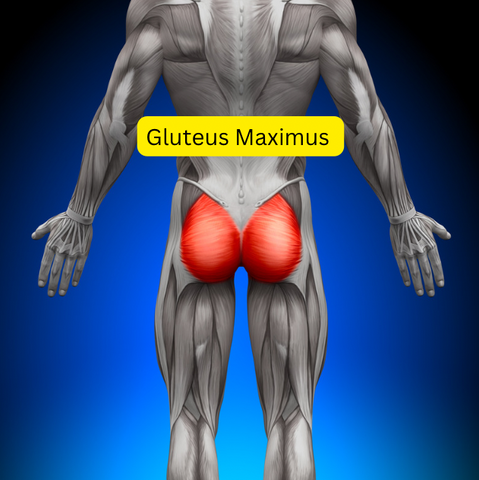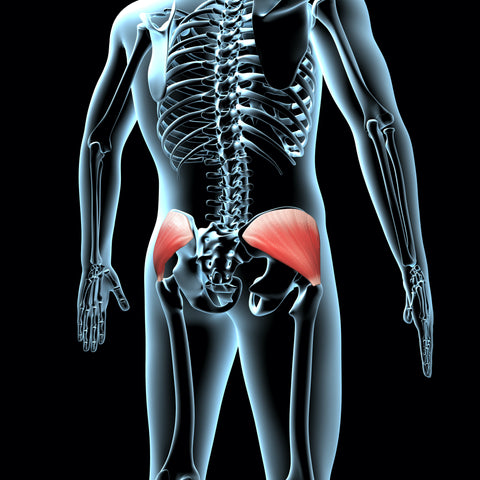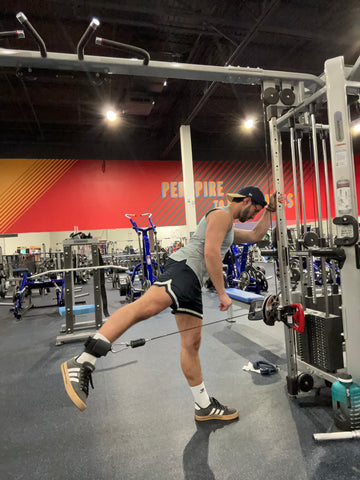Feeling stuck after trying conventional squats, lunges, and step-ups? Don't worry! Achieving the sought-after upper glute shelf might be difficult, but the results are worth it.
Learn what muscles to target along with the PERFECT exercises required for sculpting your upper glute shelf.

Targeting the Correct Muscles:
Glutes are made up for 4 main muscles, the piriformis, the gluteus maximus, gluteus medius, and gluteus minimus. Understanding which muscles to target will help you learn how to get a shelf on your upper glute.
Gluteus Maximus (shelf muscle)
The largest of the 4 muscles, the gluteus maximus occupies the most space in the buttock.
Neglecting the gluteus maximus would hinder your ability to build your upper glutes.

Gluteus Medius (shelf muscle)
Lies in the upper buttock region of the body. The Gluteus Medius lies on top of its associate Gluteus Minimus. The gluteus medius functions as a hip abductor and plays a critical role in stabilizing the pelvis.

Gluteus Minimus
The Gluteus Minimus is a small, strong glute muscle located deep within the buttocks. Gluteus Minimus is smaller than Gluteus Medius and Gluteus Maximus, as the name implies. The main role of the Gluteus Minimus, like the Medius, is to support the body while standing on one leg and swinging the leg outward in hip abduction. The Gluteus Minimus is not a muscle you want to neglect, however, its role in building an upper glute shelf will be less prominent considering the muscle size.

Piriformis
The piriformis is a short, deep glute muscle that lies underneath the large Gluteus Maximus muscle. The piriformis muscle functions as an external hip rotator and is active during explosive and lateral movements.

5 of the Best Exercises to Get an Upper Glute Shelf
Targeting the Gluteus Maximus and Gluteus Medius
Glute Focused RDLs:
One of my favorite exercises for building the upper glutes. Think of glute RDLs as a regular deadlift but on steroids for your glutes.
Glute focused RDLs allow better isolation and more effective time under tension.

When completing glute focused RDLs, focus on your glutes as you slowly lower the weight keeping it close to your legs. With enough weight and proper form you should feel a strain in your upper glutes.
Fire Hydrants:
The fire hydrant is a more convenient and multifunctional upper glute building exercise. The lateral movement of the leg and hip targets critical hip muscles that are essential for maintaining properly aligned lower back, hips, and knees.

This upper glute exercise can be completed just about anywhere and if bodyweight is too easy, try it with a resistance band.
Glute Kickbacks:
Kickbacks are an incredibly isolated motion that targets the glute medius. Kickbacks aren't typically utilized for function or athletics, but to add extra volume to "upper shelf muscles" such as the gluteus medius.

When completed at the right angle (typically with a cable machine) you can target your upper glutes directly.
Kas Glute Bridge:
Not to be confused with the standard glute bridge or hip thrust, the kas glute bridge places much more stress on the glute muscles. The movement emphasizes glute activation and time under tension, making it an excellent choice for anyone wishing to improve upper and overall glute strength.
Reverse Hyper:
The glutes play a large role in the reverse hyper movement. In order to get the most out of the exercise, contract at the top of the movement. This will isolate the upper shelf region of the glutes in a way no other exercise will.


Additional Upper Glute Building Exercises:
Back extensions for glutes or glute hyperextension
Squats, deadlifts, lunges, step ups, and hip thrusts are all additional alternatives for helping build an upper glute shelf. Also check out our page on how to activate glutes.
Building an Upper Glute Shelf - FAQ:
If your glutes are sore are they growing?
The quick answer in most cases is yes. If you exercise your glutes directly and eat enough to support your training, sore glutes come as a result.
How to get a shelf on the upper glutes?
Target the upper glute muscles (gluteus medius and gluteus maximus) with exercises such as glute focused RDLs, glute kickbacks, and kas glute bridges.
What is a kas glute bridge?
The kas glute bridge is a glute-building exercise that’s commonly mistaken for the hip thrust. While both exercises share a similar set up and weight path, the kas glute bridge is designed for a slower and controlled movement to isolate the glutes. The hip thrust on the other hand is intended for increasing explosive power and activating the entire posterior chain.
What is glute activation?
Glute activation refers to the ability of the gluteal muscles to recruit muscle fibers and contract with a mind-muscle connection. In simpler terms, glute activation means telling your glutes to wake up and prepare to work.
Check out some glute activation exercises and give it a try for yourself.
How do you release a tight gluteus medius?
Deep tissue massage is a surefire way to release a tight gluteus medius.
Tools like the QL Claw make it easy to find the tender spots in the muscle. The gluteus medius is wide and tense muscle resulting in multiple knots to work out so repositioning a couple times may be necessary.
Sink into the tool when you find the tight tissue and allow your muscle to loosen.


Now that you've read this glute focused article, check out our page on RDLs for glutes!
Sources:
[1] Donnelly, Joseph M. Travell, Simons & Simons Myofascial Pain and Dysfunction: the Trigger Point Manual. 3rd ed., Wolters Kluwer Health, 2019.
[2] Davies, Clair, and Amber Davies. The Trigger Point Therapy Workbook: Your Self-Treatment Guide for Pain Relief. 3rd ed., New Harbinger Publications, Inc., 2013.

